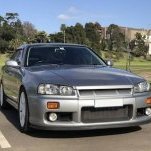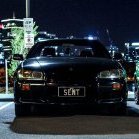Announcements
-
Similar Content
-
Latest Posts
-
By Dose Pipe Sutututu · Posted
I remembered wrong, but was close though 1Kz setting because those Jaycar SSRs don't go any faster, 1x pump per SSR with flyback diodes & heatsinks. In saying that, the heatsinks are overkill. Just on an alloy plate is more than sufficient. You'll find without a flyback diode, your SSRs will heat up big time and also die prematurely. I've been running the two same SSRs since the last motor, no issues, car does 2 hour straight drives in summer once in a while and gets punished on the track. Nothing melts, no hot messes, etc. -
Hmm. You're probably best off working out what the lobe centreline or even the LSA is for the stock cams, with VCT OFF. That's bound to be out there somewhere. Then, work on the assumption that the Kelford centreline is probably the same, and wouldn't be more than a couple of degrees away, if it is different at all. I'm very surprised that you needed to adjust the exhaust cam by 5° to get it on spec. That screams there's another problem somewhere. Anything from the belt being 1 tooth off (how many degrees is one tooth worth?) to simple user/measurement error on the degree wheel. I say this because Kelford, like most quality cam manufacturers these days, does a pretty good job of actually making the cams to spec, not relying on patching it up afterwards like we had to do back in the 80s.
-
By TurboTapin · Posted
Besides packing it, you can also fill your pump through the oil filter inlet port. After cranking for what felt like an eternity without pressure, i fed a tube in through there and filled it with oil. Cranked for a few seconds after that and had pressure. -
By TurboTapin · Posted
That's exactly what I told myself. I'm happy it came out. -
My bet is there's a fuse somewhere you blew that feeds power to the ECU. Or you've bumped something out behind the dash board.
-







Recommended Posts
Create an account or sign in to comment
You need to be a member in order to leave a comment
Create an account
Sign up for a new account in our community. It's easy!
Register a new accountSign in
Already have an account? Sign in here.
Sign In Now